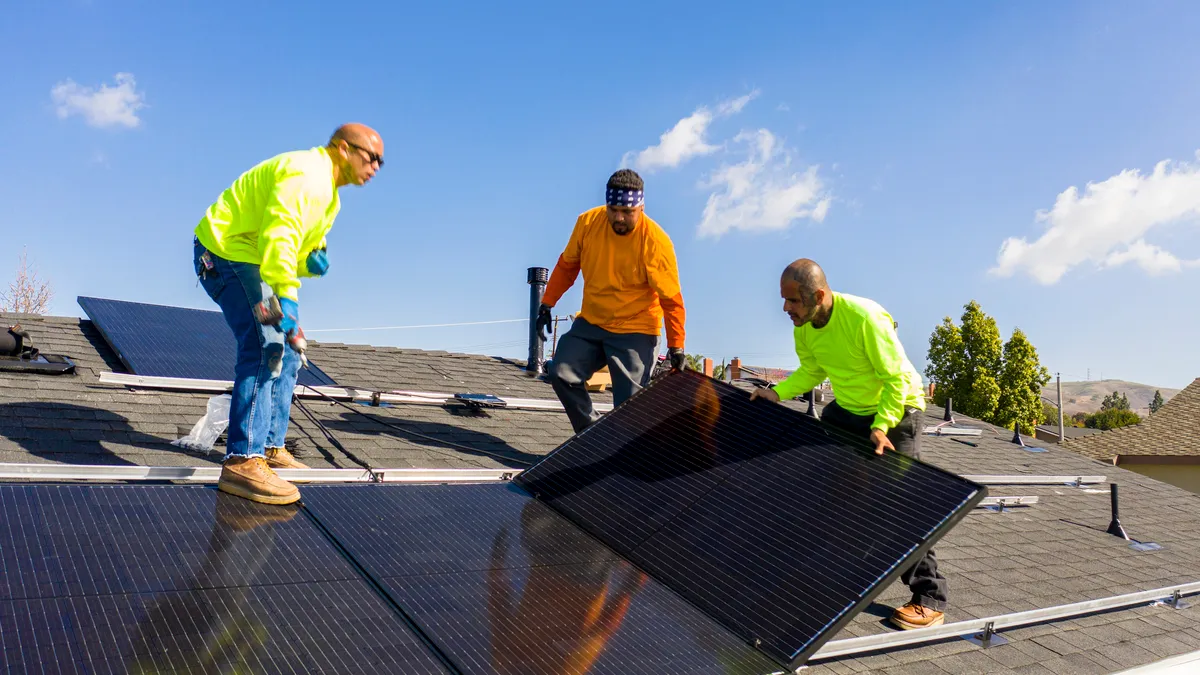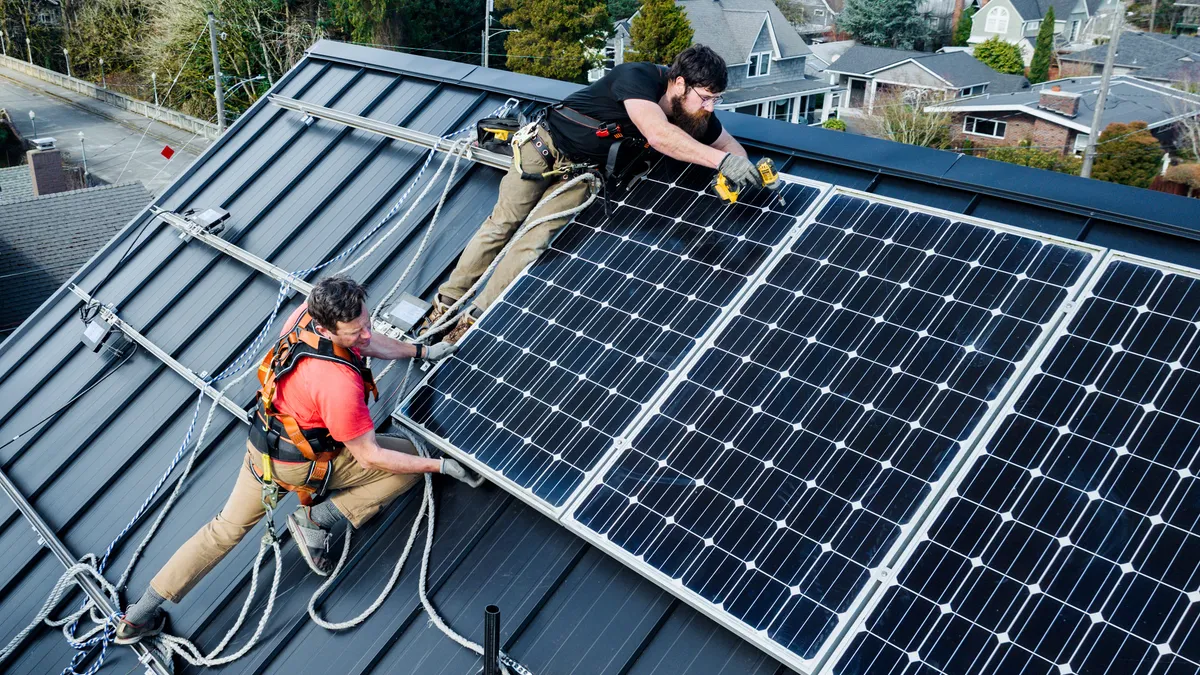The following is a contributed article by Sam Maslin, vice president of energy storage at Endurant Energy
On August 31, in response to a significant heat wave impacting California, Gov. Gavin Newsom, D, declared a State of Emergency and directed all state agencies to act to ensure the availability of sufficient power to safely satisfy the increased demand created by this extreme weather. Over the next several days, the California Independent System Operator implemented a number of emergency energy supply and savings measures to meet what ended up as a record grid peak of 52,061 MW. These actions dovetail with another related measure in Governor Newsom’s proposal to extend the life of the Diablo Canyon nuclear plant, as it is seen as necessary to support the grid while we await larger renewable deployment.
All told, it's clear that California has an urgent need for reliability resources during peak windows.
The problem is, the current reliability process — the Resource Adequacy, or RA, program — is almost exclusively focused on bulk generators and the high voltage transmission system, with scant attention paid to the potential of resources on the distribution system. This one-sided view of reliability results in an unhealthy dependence on slow-moving mega-projects, and a cycle of reactive executive orders and the repeated extensions of generation sources not favored by policymakers or consumers.
We need a path to quickly scale the complete set of energy resources needed to match renewable generation with statewide load at all times. Specifically, we need to spur the mass development of distributed assets, in load pockets, that can permanently shift energy demand away from peak periods and improve our ability to handle extreme weather events. To do this, we need to directly incentivize the reliability benefits of these assets, the same way we do on the transmission side.
The two sides of reliability
Electric reliability is the ability of the power system, through its generators, transmission and distribution lines, and other resources, to meet electric demand at all times. As the grid is made up of fixed physical assets, reliability is typically thought of in worst-case terms over a given time horizon — i.e., what is the maximum peak load, and do we have enough resources in the ground to serve that load?
It may seem obvious, but it's nonetheless important to note that reliability ultimately boils down to two factors: the capacity of the grid to serve peak load, and the peak load of the grid in the first place.
As of now, reliability planning is focused on the first factor — increasing the generation capacity of the overall grid. This is the thrust of the California Public Utilities Commission’s RA program. Qualified RA resources are resources that have been deemed to be ‘deliverable’ via years-long studies conducted by CAISO. These studies are akin to, and often paired with, the large generator interconnection cluster, and are designed to allocate blocks of transmission capacity that plants can use to ‘deliver’ power across the grid. What space there is for distributed assets is minimal and typically only an after-thought
The CPUC requires that each load-serving entity procure their allotment of RA resources, and thus running auctions for large deliverable resources has been the primary procurement focus for these utilities and community choice aggregators. There is strong interest from LSEs to develop distribution and customer-side assets in their territories, but often little clarity on how these resources would help meet state-mandated procurement requirements.
What we need is a program equivalent to RA that targets the other side of the reliability equation: reducing the peak load at the end of the transmission line. The myriad of current programs and incentives aimed at flexible loads and small onsite generators represent a patchwork of unreliable revenue streams and don’t offer the consistent signal needed by LSEs and private companies to develop projects in the first place.
Crucially, the current framework leaves out many emerging potential solutions that can and should be counted as reliability resources for their ability to sustainably reduce peak loads, such as smaller energy storage projects, advanced charging hubs, and microgrids.
To get the most out of our distribution system, and more quickly realize a reliable and renewable grid, we should consider treating all assets according to whether they actually wheel power on to the transmission grid or rather simply shift the net load profile on the distribution side. That way, we can preserve the current, transmission-focused RA program, while adding a complementary distribution-side program that drives LSE procurements.
Pairing reliability with resiliency
A major benefit of a more comprehensive focus on distribution-side reliability is the natural pairing with resiliency programs. Resiliency — the islanded power of key facilities during grid shut-down events — has become a major focus of state actors in order to protect those most at risk from a loss of power. Under Senate Bill 1339, the CPUC along with the major utilities are developing a Microgrid Incentive Plan to provide a framework supporting resiliency solutions across the state.
There is no reason these resiliency projects shouldn’t be fully counted as reliability resources to the extent they can reduce ongoing peak load — reliability resources that support the wider grid during ‘blue sky’ conditions can naturally be used as resiliency resources to support a local community during ‘black sky’ conditions, and in fact this potential is implied in PG&E’s Community Microgrid Enablement Program, which allows wholesale front-of-meter assets to integrate with islanded back-up solutions.
Giving reliability credit to resiliency resources will do a lot to spur the development of resiliency solutions in the first place, as this asset class has traditionally been plagued by business model challenges stemming from a sole focus on rare events.
CCAs in particular are a key player in resiliency, as these organizations are governed by the local towns and counties whose territory they serve, and they typically have explicit mandates, as well as an inherent orientation, around solutions to increase resiliency in their communities. If these CCAs can get valuable reliability credits from resources that are also serving as back-stops for their most critical loads and vulnerable stakeholders, they will be highly motivated to roll out microgrids and other solutions across their territories that will greatly strengthen the overall grid.
Using all our resources
Ultimately we need to make the best use of all our assets to meet the energy challenges of the present and the future. CAISO, CPUC and others are working hard to maximize the renewable energy we can transmit on our transmission system, and the same focus ought to be applied to the potential of our distribution system to match state load with this generation. A robust set of resources in load centers will help us avoid the emergency shut-down measures that have unfortunately become an annual occurrence in California.
The investor-owned utilities themselves recognize this potential, and are starting to develop projects to increase both the reliability and resiliency of their grids. For example, San Diego Gas and Electric recently deployed four microgrids with energy storage to dispatch energy into the local peak day-to-day, while also providing back-up power for critical facilities. According to SDG&E’s VP of Energy Innovation Miguel Romero, “these clean energy projects will help our region become more resilient to the impacts of our worsening climate.”
The problem is, under current rules these projects would receive zero official reliability credit, and hence can only effectively be sponsored by one of the large utilities that can rate-base them. We ought to engage the complete set of stakeholders needed to fully develop solutions like these. To do so, we need a clear standard for distribution-side grid reliability.





















